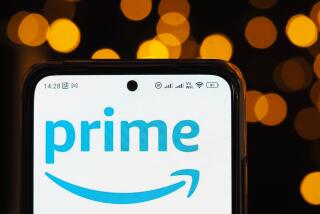THE CUTTING EDGE : CYBERSPACE : Lower Phone Bills May Be a Click Away
- Share via
Once telephone service was delivered monopoly-style, so setting up the home phone was simple. Today, shopping for long-distance, local toll and wireless service is confusing and unpleasant--and that’s if you steer clear of the scam artists.
But free help is out there on Internet sites that have done much of the dirty work for you. The Web pages vary in their sophistication and their breadth, with some offering tips and price surveys and others providing formulas to help consumers find the best service for their needs.
For many callers, even a cursory review of the information on these sites will help them lower their phone bills.
That’s particularly true of long-distance service, by far the nation’s most competitive and mind-boggling phone market--and an area in which the majority of residential customers are still paying outrageously high per-minute rates.
It’s critical for consumers to select their long-distance carrier (and their underlying service plan) carefully, because that company will automatically handle all the long-distance calls dialed directly from their home lines.
In addition, it’s become important to know something about the new breed of phone carriers offering “dial-around” long-distance services. These companies, heavily advertised as “10-10” carriers, allow consumers to bypass their default long-distance provider on individual calls by dialing a special access code.
As many of these Internet sites stress, customers save the most money when they find a plan that closely matches their calling habits, or vice versa. In many cases, heavily promoted plans--whether offered by traditional phone companies or their 10-10 brethren--are not the best deals.
One of the best consumer-oriented phone sites is https://www.abelltolls.com, an extensive resource that includes reviews of almost 100 different phone plans and services, from all manner of long-distance categories (international, state-to-state, 10-10 dial-around) to calling card rates.
The folks at A Bell Tolls also sprinkle some telecom humor into the mix as they offer tips and explain arcane fees and other stuff phone companies only mention in small print. A Bell Tolls also includes handy phone company listings that help identify little-known carriers and which company is behind a certain 10-10 service. (10-10-356, for example, is run by Bluegrass Long Distance Inc.)
Another key site, https://www.trac.org, is run by the Telecommunications Research & Action Center, an independent nonprofit organization based in Washington. The group publishes and sells price comparison data through its TeleTips newsletters but also includes much of the information on its Web site.
The TRAC Web site includes pricing information from recent studies and shopping tips for long-distance and wireless phone service, as well as WebPricer, an automated database that can calculate the price of state-to-state calls using plans offered by the country’s largest carriers (based on data you provide about your calling patterns).
Other Web resources include https://www.consumer-action.org, which posts tips and price-comparison studies covering 10-10, long-distance and calling cards, and https://www.teleworth.com, which provides tips and consumer warnings, along with some price guidance through its TeleRate automatic cost comparison system (again, using information you provide).
A site to watch in the future is https://www.essential.com, a newcomer that plans to become a national online superstore, offering consumers shopping guidance on a wide range of phone services as well as energy, Internet and entertainment information.
One of my favorites, though, is an offbeat site painstakingly maintained by a Southern Californian named Larry Greenfield, who does this as a hobby.
The site, https://www.tcp.com/~lgreenf/long.htm, is just one of Greenfield’s extracurricular interests (along with music, travel, shortwave radio and Japanese animation), but his no-frills long-distance pages are well-researched and amazingly detailed.
Greenfield provides solid consumer tips and warnings in a friendly I’m-just-like-you way, covering everything from calling cards to pay phones and directory assistance as well as long-distance plans and services. He includes his own recommendations and accounts of his mistakes, along with clearly explained information about arcane telecom fees and the like.
Another site, https://www.salestar.com, is one of the few sites to tackle the tough task of comparing local toll prices--which are excruciatingly complex in California. Salestar’s site is a commercial one, but it provides a WebPricer for both national calling and local toll calling. Local toll calls vary widely by location but are generally defined as calls that travel more than 13 miles but not far enough to qualify as long distance.
In the wireless world, there are relatively few independent comparison sites for pricing phones and service, chiefly because the rates and phone models vary widely by individual market and are often the subject of fast-changing special offers.
But many sites listed above include information about wireless service, and there are a few that specialize in the mobile market exclusively, such as https://www.talkingonair.com, https://www.cellmania.com and https://www.point.com.
All three sites have compiled detailed information about price plans and mobile phones offered in many major U.S. cities, including Los Angeles, San Francisco, San Diego, San Jose, Sacramento and Oakland. Cellmania covers just California for now.
The sites feature buying guides that allow users to narrow down their choices by answering questions about their preferences and usage patterns. They also clearly disclose all the relevant details about each plan (such as termination fees or roaming surcharges) and will accept online orders.
But you generally won’t find critiques of the phones and services on these sites, and customers should be aware that they offer “partnerships” and other sponsorship opportunities to wireless phone companies.
Times staff writer Elizabeth Douglass can be reached at [email protected].






